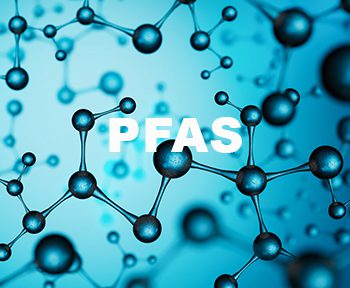Can PFAS Chemicals in Tenths or Even Hundredths Parts Per Trillion Present a Health Risk?
June 29, 2022
Earlier this month, the U.S. Environmental Protection Agency (USEPA) issued new lifetime health advisories for four different types of per- and polyfluoroalkyl substances (PFAS) in drinking water. USEPA’s announcement is the latest action under the agency’s PFAS Strategic Roadmap. Although health advisories are not enforceable, they create a number of potential compliance issues because they are intended to provide technical information on newly regulated contaminants to other regulatory bodies. Health advisories also act as precursors to the adoption of federal maximum contaminant levels (MCLs), which set minimum drinking water standards for states to meet.
By way of background, the Safe Water Drinking Act (SWDA) authorizes USEPA to issue health advisories for contaminants that are known or expected to occur in public water systems and may warrant regulation. (42 U.S.C. § 300g-1(b)(1)(F).) Advisories identify the concentration of a contaminant in drinking water at which adverse health effects are not anticipated to occur over specific exposure durations (e.g., one day, 10 days, a lifetime) and provide information about health effects, analytical methodologies, and treatment technologies. Lifetime health advisories identify levels to protect all people, including sensitive populations, from adverse health effects resulting from a lifetime of exposure to a particular chemical’s presence in drinking water.
USEPA’s specific actions included the issuance of two revised interim health advisory levels (HALs) for perfluorooctane sulfonic acid (PFOS) and perfluorooctanoic acid (PFOA) at 0.02 parts per trillion (ppt) and 0.004 ppt, respectively. These new HALs drastically reduced USEPA’s previously issued HALs for PFOS and PFOA from 2016, which set original levels for both PFOS and PFOA at 70 ppt. USEPA also issued two final HALs for perfluorobutane sulfonic acid (PFBS) and hexafluoropropylene oxide dimer acid (HFPO-DA or “GenX”) for the first time, setting the lifetime levels at 2,000 ppt for PFBS and 10 ppt for GenX. These other PFAS compounds are important in chemical and product manufacturing as GenX chemicals have been used as a replacement compound for PFOA, and PFBS has been used a replacement for PFOS.
As noted above, although USEPA’s HALs for PFOA and PFOS are not enforceable, HALs can influence similar drinking water standards under state law and can impact other standards for non-drinking water sources such as wastewater. As we previously reported, the California Office of Environmental Health Hazard Assessment (OEHHA) is currently developing public health goals (PHGs) for PFOA and PFOS in drinking water. OEHHA proposed a PHG for PFOA at 0.007 ppt (based on kidney cancer in humans) and PFOS at 1 ppt (based on liver and pancreatic tumors in laboratory animals). The State Water Resources Control Board (State Water Board) must then set state MCLs as close to the applicable PHG as is economically and technologically feasible. Accordingly, USEPA’s health advisories for PFOA and PFOS are even lower than the already significantly low thresholds set forth in OEHHA’s draft PHGs.
Relatedly, USEPA also announced it is poised to propose legally enforceable drinking water standards or MCLs for PFAS by the end of this year. Although the final MCLs will take additional time to develop and consider both financial and enforcement feasibility, there is concern from the regulated community that USEPA’s new stringent HALs reflect the possibility of similarly restrictive regulations in federal MCLs. For example, USEPA’s advisories identified that 80% of human exposure to PFAS occurs from sources other than drinking water (such as consumer products). Moreover, USEPA has acknowledged that the HALs for PFOA and PFOS are below the levels of detection (i.e., determining whether a substance is present) and quantitation (i.e., determining how much of a substance is present). In other words, PFOA or PFOS may be present in drinking water at levels that exceed health advisories even if testing indicates no level of the chemicals. As a result, there are concerns that USEPA’s actions are too narrow or not holistic enough, do not take into account source control, and have the potential to negatively impact other non-drinking water programs such as the generation and use of biosolids and wastewater treatment.
In response, USEPA has reiterated that the issued HALs are applicable to drinking water only, not enforceable as regulations, and the concerns for biosolids regulation and waste water treatment are being addressed under other programs. Responding to concerns over the HALs being so low that they cannot be detected, USEPA indicates that while PFOA and PFOS may be present in trace concentrations that cannot be measured, water provided by impacted public drinking water systems is of lower risk than if PFOA and PFOS are found at measurable levels. If public water systems find PFOA and PFOS in their drinking water, however, USEPA also recommends taking steps to inform customers, undertake additional sampling, and examine steps to limit exposure. Additionally, USEPA announced it is making available $1 billion in grant funding to assist small or disadvantaged communities in addressing PFAS in drinking water through technical assistance, water quality testing, contractor training, and installation of treatment systems.
USEPA’s announcement is the latest major action to address concerns over the presence of PFAS in public drinking water sources. For questions about USEPA’s health advisories or OEHHA’s draft PHGs, please contact us.

